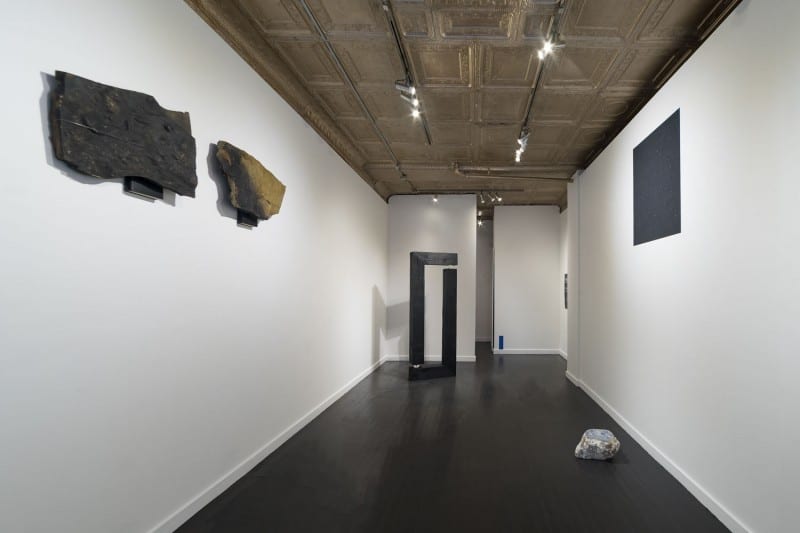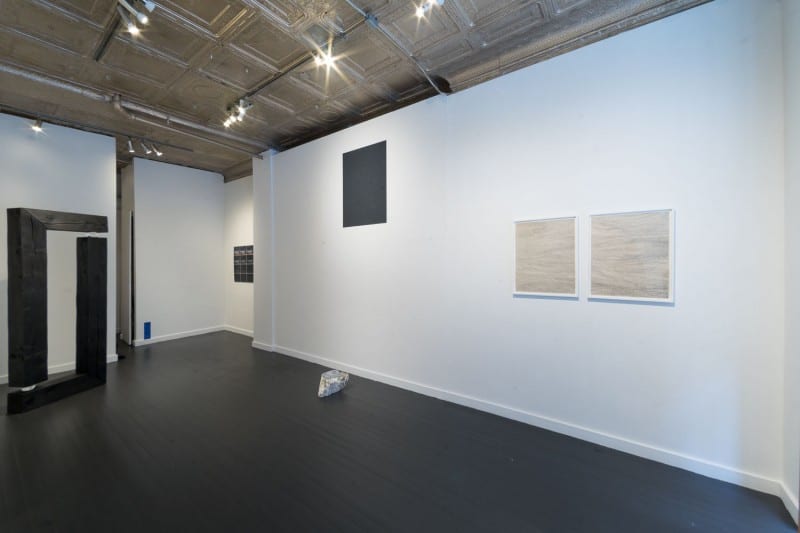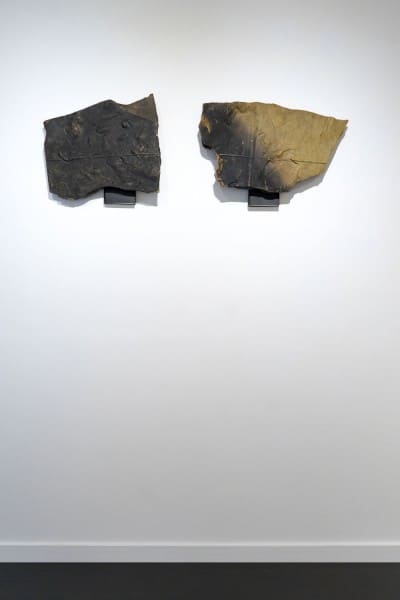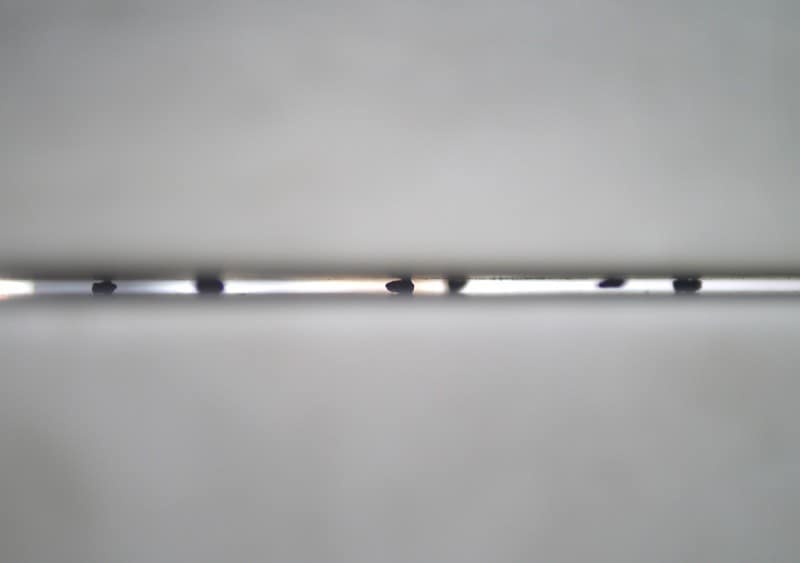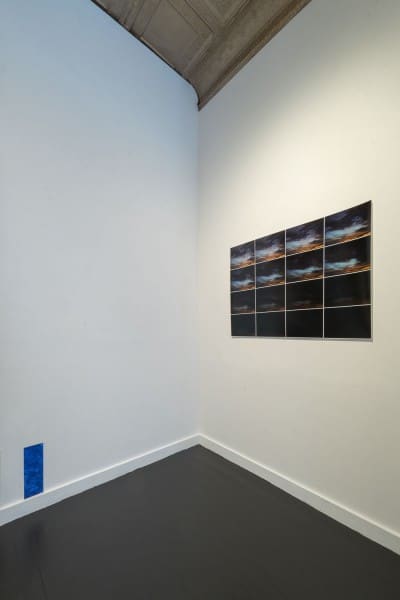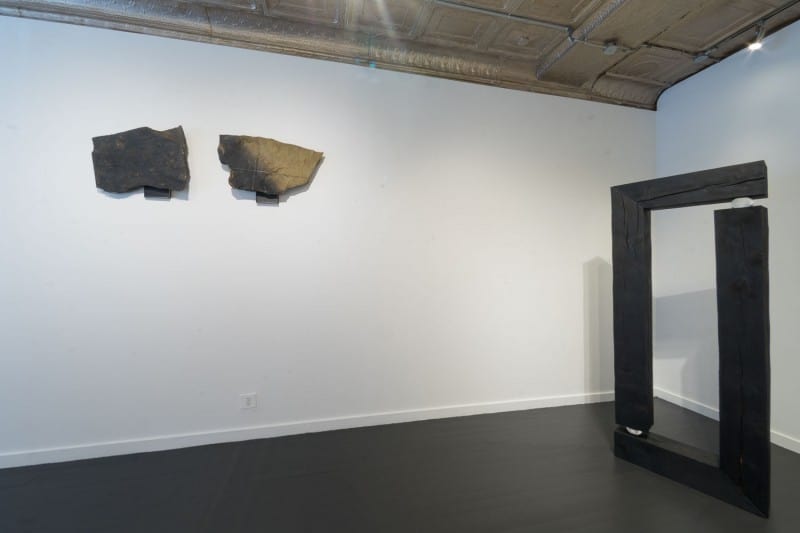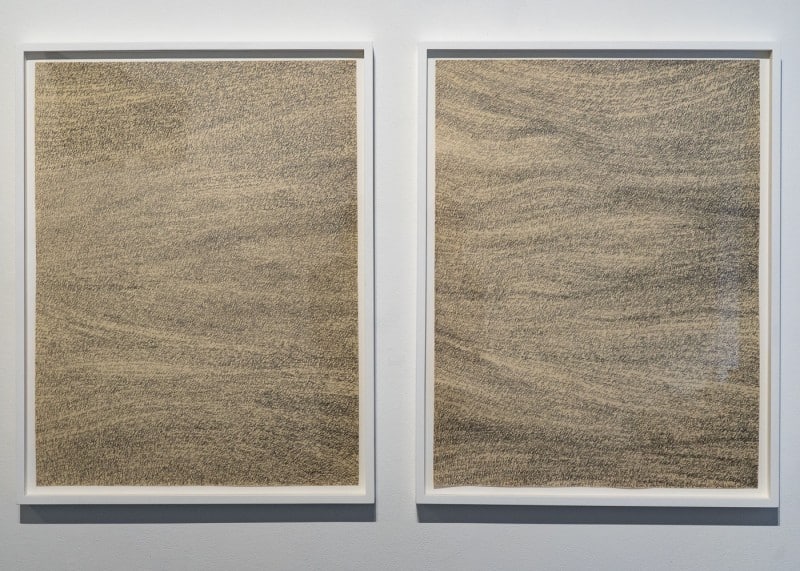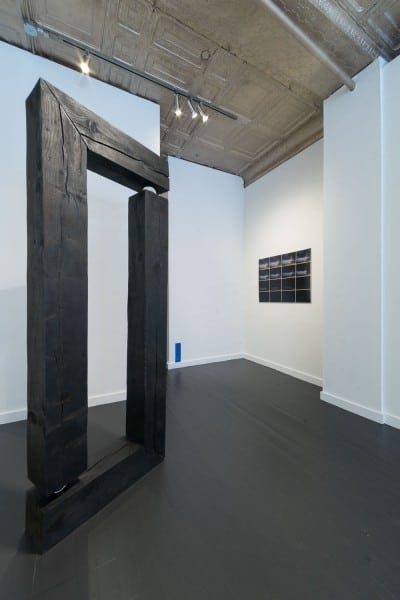view at Catinca Tabacaru Gallery, aims to create situations and dialogs for us to probe our relationships to, and
placements within the material world and its deep, incomprehensible history. Part historic, part scientific, part spiritual, the exhibition is a continuation of his exploration of natural, core materials; marble, black diamonds, fossilized stone, pure pigments, bone, crystal, and pure metals.
We spoke to the artist about the past, future, history, and changing one’s perception.
QL: Your show at Catinca Tabacaru Gallery is titled ‘Past Tense’. Can you tell us a little about the
meaning behind the title?
JB: Recently, the past seems to be coming back to haunt us, especially here in America. Problems that we maybe felt were dead and buried; fascism, institutional racism, religious extremism, have been revealed to be very much alive and well. This should not be a surprise though, especially when one takes a wider and longer view of history. As a species and as individuals, I think we’re creatures of pattern. The title for the show, “Past Tense” grew out of my personal anxiety when reflecting on these patterns. It also brings together two major threads in the work; time and language.
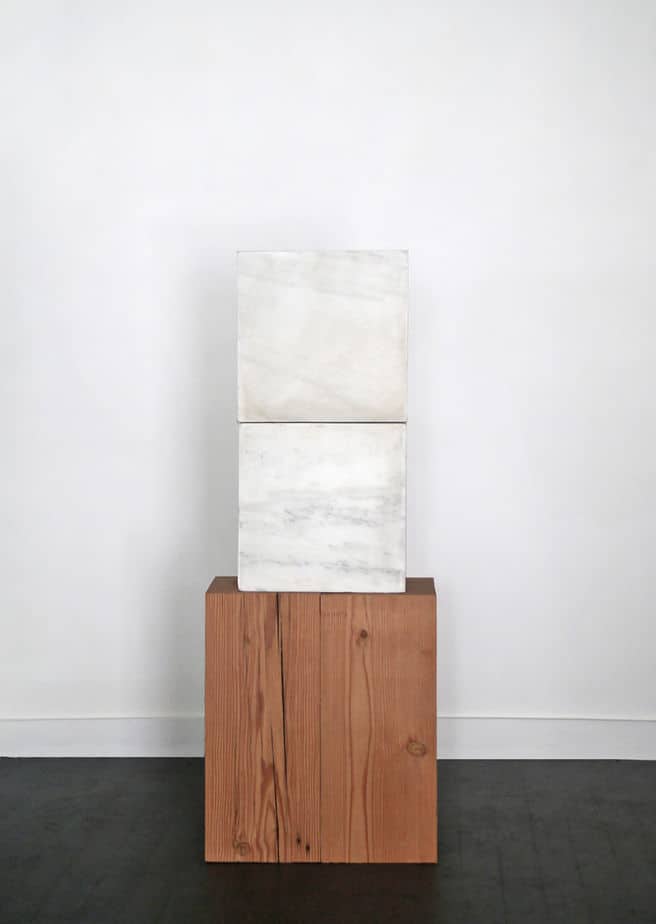
QL: Each of the sculptural pieces aims to ask fundamental questions of human sensibility, time and history. You also use objects plucked from nature such as sand and petrified stones, can you tell us about “Days and Ages” and “Frozen River”?
JB: These two works are both elemental in nature. Each takes two unexpected materials and puts them in a new relation to each other. “Frozen River” is made from two petrified river stones., steel wire, and a 1931 printing of “Decline of the West” by Oswald Spangler. This rare book was chosen as this was the last printing of the book in Germany before Nazi control of the press. The book is a beautiful and poetic, though misguided, examination of human history. It comes to the conclusion that western culture is at it’s end and a new era of democratically elected fascists will take over and divide the world. In many ways it predicted the the rise of figures like Hitler, Mussolini, and Franco. For this reason, it feels very fresh when read in 2017. The book is a time capsule and a reminder of human nature. The fossilized stone is another form of a time capsule. A flowing river frozen in time, sealed off from light for millions of years. The beautifully patterned stones are now used to hold the Spangler’s books to the wall. Dug out of the past and held in tension on a wall, these objects are injected with new energy and meaning. “Frozen River” is an invitation to the past.
“Days and Ages” is also an invitation. In this work a chunk of hand polished marble and black sand from a magnetite beach in Oregon are brought together to make a stage setting. A window is cut into a wall and filled with the sand. The marble is placed as a stepping stone to peer out the window. Standing on the stone is an invitation to alter one’s perception, ever so slightly. The sand sparkles, reflecting light as one moves around it. This shimmering surface registers the viewer’s presence, brings the passage of time into the work, and invites you to look through the walls of the room you find yourself in.
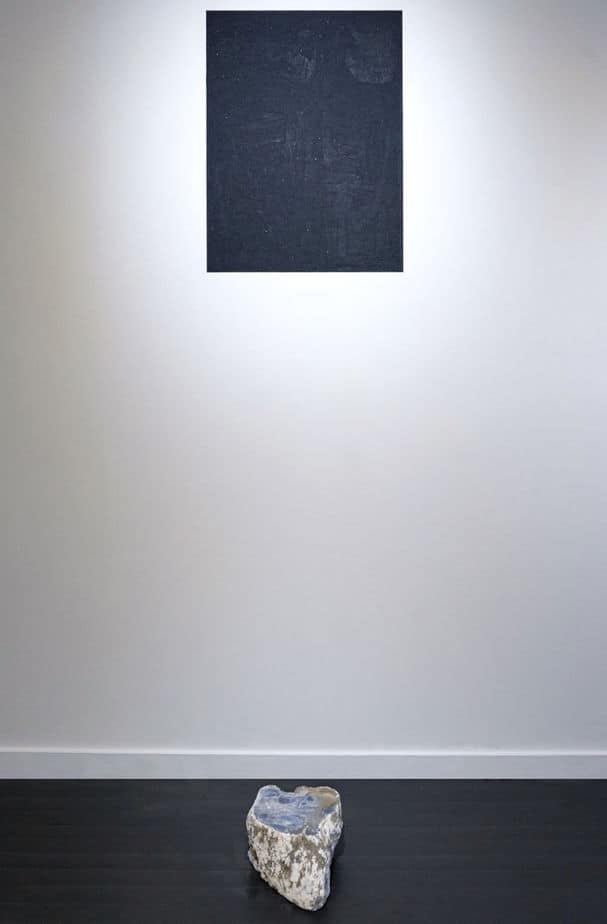
QL: Your practice is very much based in material, and how the viewer interacts with the material, how do you want or expect gallery visitors to react to the pieces?
JB: I try not to have expectations, but I hope that the focus created by the space of contemporary art will encourage visitors to be curious about the materials of the work and then that curiosity will extend to the materials of their own lives. We’re all aware these days of the food we eat and perhaps we know that our phones are assembled in mega factories in Shenzhen, but we may not think about how old the sunlight is that comes in through our window, or what mountain the marble blocks that make up our office building where carved from. These materials make up the larger borders and horizons of our bodies and our existence. I believe there are such rich veins of poetry than can be mined when we pay this type of attention.
QL: Included in the show are some drawing pieces, can you tell us a bit about this relates to the sculptural work, references nature and human experience?
JB: Drawing and sculpture often go hand and hand. For me, the immediate satisfaction of mark making is a necessary balance to the planning and process that goes into making sculpture. With this new group of drawings I’m showing at Catinca Tabacaru Gallery, thoughts are written in a continuous and overlapping way until the lines of the letters overtakes the words. The texture and the layers in the drawings references the physicality of the sculptural works. The writing itself is a stream of consciousness poetry where the themes of the show are discussed, questions are posed, argued, repeated and redacted, over and over again. Text as texture. The challenge I gave to myself was to keep writing when I could no longer make out the words. As an exercise it’s frustrating, until I give into the abstract and liquid nature of writing, thinking and language in general. What is discovered is how delicate the words are (and therefore meaning) and how quickly my eyes can no longer make out the words as they’re layered. But, when one steps back a little, amazing patterns emerge. These patterns are like those we find most beautiful in nature – waves on a sea, sandy dunes, grain patterns in wood and stone – patterns that are a mess up close but when we take in the full view, make sense to use on a deep and elemental level.
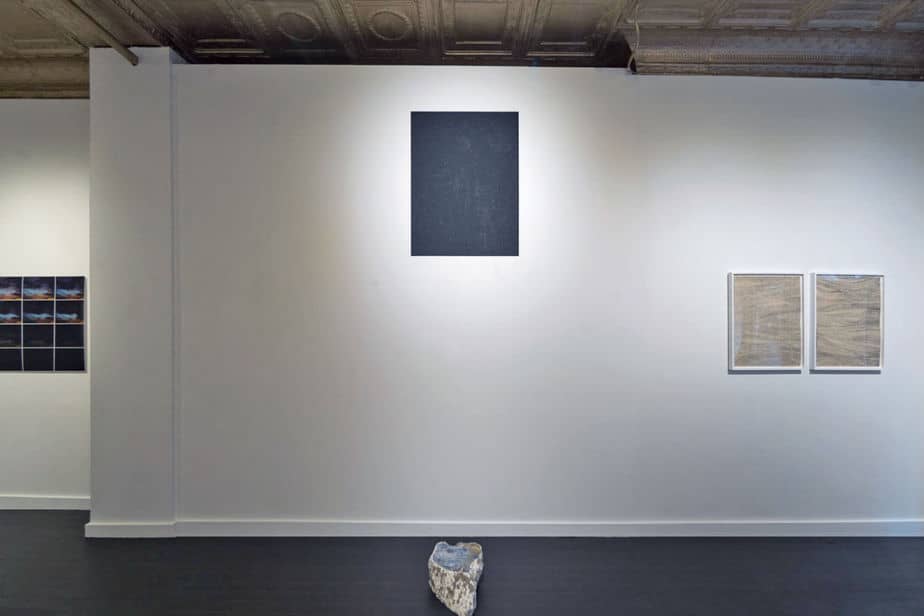
Past Tense is on view at Catinca Tabacaru Gallery, 250 Broome St, New York through Oct 22, 2017.

Quiet Lunch is a grassroot online publication that seeks to promote various aspects of life and culture with a loving, but brute, educational tinge. When we say, “Creative Sustenance Daily,” we mean it.

